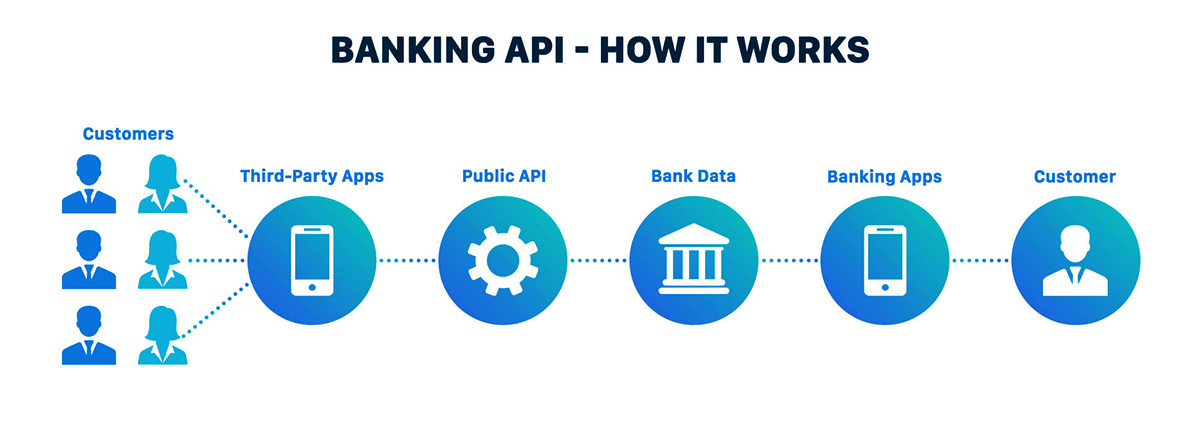

Finance
What Is IAT In Banking
Published: October 13, 2023
Discover the role of IAT in banking and how it impacts the finance industry. Stay informed on the latest trends and developments in finance with our comprehensive guide.
(Many of the links in this article redirect to a specific reviewed product. Your purchase of these products through affiliate links helps to generate commission for LiveWell, at no extra cost. Learn more)
Table of Contents
Introduction
In the world of finance and banking, staying ahead of evolving technologies and regulatory requirements is of paramount importance. One such technology that has become increasingly vital is the Automated Clearing House (ACH) system, which enables electronic transactions to be processed quickly and securely. Within the realm of ACH, there exists a specific feature known as Intra-Bank Account Transfers (IAT).
IAT refers to the transfer of funds between accounts within the same financial institution. This feature allows customers to seamlessly move funds between their different accounts, such as checking, savings, or investment accounts, within a single banking institution. The primary purpose of IAT is to provide customers with enhanced convenience and flexibility in managing their finances.
With the rapid advancement of digital banking and the growing customer demand for instant transfers and seamless transactions, IAT has gained significant relevance in today’s banking landscape. It enables customers to efficiently allocate funds, make timely payments, and consolidate their financial activities without the need to involve external entities.
The implementation of IAT in banking institutions has transformed the traditional banking experience by mitigating the need for manual intervention and reducing transactional complexities. As technology continues to evolve, the adoption of IAT has enabled banks to streamline their internal processes and offer enhanced services to their customers.
In the following sections, we will explore the definition and application of IAT in banking, delve into its importance and benefits, examine real-life examples, discuss the challenges and risks associated with its implementation, and highlight the regulatory framework governing IAT in the banking sector.
Definition of IAT
Intra-Bank Account Transfers (IAT) is a feature within the Automated Clearing House (ACH) system that enables the transfer of funds between accounts within the same banking institution. It allows customers to move money seamlessly between different accounts, such as checking, savings, and investment accounts, without the need for external intermediaries.
IAT is typically facilitated through online banking platforms or mobile banking applications, where customers can initiate the transfer with a few clicks or taps on their devices. The transaction is processed electronically and settled within the same financial institution, ensuring fast and secure transfer of funds.
Unlike Inter-Bank Account Transfers, which involve transferring funds between different banks or financial institutions, IAT transactions take place entirely within the same banking organization. This simplifies the process and eliminates the need for coordination between multiple parties.
One of the distinguishing features of IAT is the instantaneous nature of the transfer. With the rise of real-time payment systems, many banking institutions have adopted technologies that enable near-instant fund transfers, allowing customers to see the funds reflected in their recipient account immediately. This provides a seamless experience for individuals and businesses when managing their financial transactions.
Moreover, IAT transactions can encompass various types of transfers, from one-time transfers for bill payments or loan repayments to recurring transfers for savings or investment purposes. The flexibility and convenience offered by IAT contribute to the overall efficiency and effectiveness of banking services.
It’s important to note that the availability and specific features of IAT may vary depending on the banking institution and its digital banking infrastructure. Therefore, customers are advised to consult their bank’s policies and online banking platforms to understand the specific capabilities and limitations of IAT.
Application of IAT in Banking
The Intra-Bank Account Transfer (IAT) feature has found extensive applications within the banking industry, transforming the way customers manage their finances and facilitating seamless transactions. Here, we explore some of the key applications of IAT:
1. Account Consolidation: IAT allows customers to consolidate their multiple accounts within the same banking institution, providing a centralized view of their financial holdings. This simplifies money management by enabling easy transfers between accounts, reducing the need for manual interventions and paperwork.
2. Fund Allocation: IAT empowers customers to allocate and distribute funds across different accounts based on their financial goals and priorities. Whether it is setting aside money for emergencies, saving for a specific purchase, or investing in long-term assets, IAT makes it convenient to transfer funds between accounts and optimize their financial planning.
3. Bill Payments: IAT provides a hassle-free way to make recurring bill payments. Customers can set up automatic transfers from their checking accounts to pay utility bills, loan installments, credit card payments, and other regular expenses. This automation ensures timely payments, reduces the risk of late fees, and enhances overall financial management.
4. Loan Payments: For individuals with multiple loans, such as mortgages, car loans, or personal loans, IAT simplifies the process of making loan payments. Customers can easily transfer funds from their designated account to the loan account, ensuring timely repayments and avoiding potential penalties.
5. Savings and Investments: IAT enables customers to automate transfers from their primary accounts to designated savings or investment accounts. This helps individuals build their savings, contribute regularly to retirement plans, or invest in various financial instruments, fostering long-term financial growth.
6. Business Transactions: IAT is also beneficial for business banking customers. It allows them to manage multiple accounts related to their business operations, such as payroll, vendor payments, or expense accounts. With IAT, businesses can streamline their transaction processes and have better control over their financial activities.
7. Estate Planning: In the context of estate planning, IAT offers a convenient way for individuals to transfer funds between their personal accounts and trust accounts. This aids in the seamless administration and distribution of assets, ensuring that the intended beneficiaries receive their inheritances as per the predetermined plan.
The applications of IAT continue to expand as banking institutions innovate and enhance their digital banking platforms. With the growing adoption of real-time payment systems and customer demand for convenience and efficiency, IAT plays a pivotal role in transforming the banking experience and empowering individuals and businesses to manage their finances effectively.
Importance and Benefits of IAT in Banking
The Intra-Bank Account Transfer (IAT) feature in banking holds significant importance and offers numerous benefits to both customers and financial institutions. Let’s explore some of the key reasons why IAT has become an integral part of modern banking:
1. Convenience: IAT provides unparalleled convenience to customers by allowing them to transfer funds between their accounts within the same banking institution seamlessly. It eliminates the need to visit a branch or involve external intermediaries, saving time and effort in managing financial transactions.
2. Flexibility: IAT offers customers the flexibility to allocate and move funds based on their individual financial needs and goals. Whether it’s transferring money to a savings account, investing in a specific asset, or making recurring bill payments, customers can customize their transfers easily and efficiently.
3. Efficiency: By leveraging automation and digital platforms, IAT streamlines internal processes for financial institutions. It reduces manual intervention, paperwork, and processing time, thereby increasing overall operational efficiency and ensuring faster fund transfers.
4. Cost Savings: IAT can result in cost savings for customers and financial institutions alike. With fewer physical transactions and reduced reliance on external payment services, both parties can save on transaction fees and associated costs.
5. Real-Time Transfers: With the advent of real-time payment systems, IAT enables near-instantaneous fund transfers within the same banking institution. This provides customers with immediate access to funds and enhances their ability to manage their finances in real-time.
6. Enhanced Security: IAT transactions are subject to the rigorous security measures and protocols implemented by banking institutions. By keeping the transfer within the same institution, the risk of fraudulent activities and unauthorized access is minimized, ensuring a secure transfer process.
7. Consolidation of Financial Activities: IAT facilitates the consolidation of multiple financial activities into a single banking institution, making it easier for customers to track, monitor, and manage their finances. It provides a holistic view of their accounts, simplifying financial planning and decision-making.
8. Improved Cash Flow Management: For businesses, IAT offers improved cash flow management by enabling efficient transfers between various accounts. Businesses can optimize liquidity, allocate funds for operational expenses, and make timely payments to suppliers or employees.
9. Enhanced Customer Experience: IAT contributes to an improved customer experience by providing seamless and convenient banking services. Customers can navigate their accounts effortlessly, make the necessary transfers, and gain control over their financial transactions, fostering loyalty and satisfaction.
10. Compliance with Regulatory Requirements: IAT facilitates compliance with regulatory guidelines and requirements. Financial institutions can ensure transparency, traceability, and accurate reporting of funds transferred within their organization, aligning with anti-money laundering (AML) and Know Your Customer (KYC) regulations.
In summary, the importance and benefits of IAT in banking encompass convenience, flexibility, efficiency, cost savings, enhanced security, consolidation of financial activities, improved cash flow management, enhanced customer experience, and regulatory compliance. As digital banking continues to evolve, the adoption and utilization of IAT will play a critical role in meeting the evolving needs of customers and driving operational excellence within the banking industry.
Examples of IAT in Banking
The Intra-Bank Account Transfer (IAT) feature is widely utilized by banking institutions to provide seamless and convenient financial services to their customers. Let’s explore some examples of how IAT is applied in real-life banking scenarios:
1. Personal Account Transfers: Customers can easily transfer funds between their different accounts within the same bank, such as moving money from a savings account to a checking account to cover daily expenses or vice versa. This enables individuals to efficiently manage their finances and ensure that funds are allocated where they are needed most.
2. Loan Payments: Many banking customers have loans with the same financial institution. With the IAT feature, borrowers can transfer funds from their savings or checking accounts to make loan repayments, ensuring timely payments and avoiding potential penalties.
3. Savings and Investment Transfers: Individuals can set up automatic transfers between their primary account and designated savings or investment accounts. This allows for regular contributions towards saving goals, retirement plans, or investment portfolios, making it easier to achieve long-term financial objectives.
4. Bill Payments: IAT simplifies the process of paying bills by enabling customers to set up recurring transfers from their checking accounts to cover monthly expenses. Whether it’s utility bills, mortgage payments, or credit card dues, customers can ensure timely payments without the hassle of manual interventions.
5. Consolidation of Multiple Accounts: IAT allows customers to consolidate their multiple accounts within the same banking institution. By transferring funds between accounts, individuals can streamline their financial management and have a centralized view of their holdings, simplifying account monitoring and financial planning.
6. Business Transactions: IAT is crucial in the context of business banking as well. Companies can make intra-bank transfers between different accounts such as payroll accounts, vendor payment accounts, or expense accounts. This facilitates efficient cash flow management, ensuring timely payments to employees and suppliers.
7. Estate Planning: In the realm of estate planning, IAT plays a vital role in transferring funds from personal accounts to trust accounts. This helps individuals ensure the smooth administration and distribution of their assets as per their predetermined plans, facilitating the transfer of wealth to beneficiaries.
8. Real-Time Fund Transfers: With the advent of real-time payment systems, IAT can facilitate near-instantaneous transfers between accounts within the same banking institution. This allows customers to see the funds reflected immediately in their recipient accounts, providing them with immediate access to the transferred funds.
9. Emergency Fund Transfers: IAT is particularly beneficial in emergency situations, where individuals may need to access funds from their savings or investment accounts quickly. With IAT, customers can transfer funds instantly to their primary accounts for immediate use during unforeseen circumstances.
These examples demonstrate the versatility and practicality of IAT in banking. By allowing customers to seamlessly transfer funds within the same banking institution, IAT simplifies financial management, enhances convenience, and empowers individuals and businesses to effectively allocate their funds and meet their financial goals.
Challenges and Risks associated with IAT in Banking
While the Intra-Bank Account Transfer (IAT) feature brings numerous benefits to customers and banking institutions, it is important to acknowledge and address the challenges and risks that can arise with its implementation. Here are some of the key challenges and risks associated with IAT in banking:
1. Security Concerns: As with any digital financial transaction, there is always a risk of security breaches, including unauthorized access to customer accounts, data breaches, or fraudulent activities. Banks must implement robust security measures, encryption protocols, and two-factor authentication to mitigate these risks and safeguard customer funds.
2. Operational Complexity: Implementing IAT requires robust banking infrastructure and technology systems to ensure smooth transaction processing. Maintaining these systems can be complex and costly, requiring continuous monitoring, updates, and compatibility with evolving industry standards.
3. Transaction Limits and Fees: Some banking institutions might impose transaction limits or fees for IAT transactions. These limits can restrict the amount of funds that can be transferred, impacting customers who require higher transfer amounts. Additionally, transaction fees can increase the cost of using IAT for frequent or large transfers.
4. Technical Glitches and Downtime: Like any technology-driven service, IAT can experience technical glitches or downtime, leading to delays or disruptions in fund transfers. Banking institutions need to have robust IT infrastructure, redundancy measures, and disaster recovery plans in place to minimize the impact of such issues.
5. Customer Education and Familiarization: Customers need to be educated about the features, benefits, and limitations of IAT to ensure its optimal utilization. Lack of awareness or unfamiliarity with the IAT process can result in errors, delays, or customer dissatisfaction. Banks must invest in customer education initiatives to ensure a smooth adoption and usage of IAT.
6. Regulatory Compliance: The banking industry is highly regulated, and compliance with regulatory requirements is essential. Banks must adhere to anti-money laundering (AML) and Know Your Customer (KYC) regulations when implementing IAT to prevent illicit activities, promote transparency, and protect the financial system from abuse.
7. System Integration Challenges: Integrating IAT systems with existing banking infrastructure can be complex, particularly in legacy systems. Seamless integration is crucial to ensure a smooth and reliable transfer process across all accounts and banking channels.
8. Misdirected or Incorrect Transfers: Human errors or technical glitches can lead to misdirected or incorrect transfers, resulting in funds being sent to the wrong accounts. Such errors can be time-consuming and resource-intensive to rectify, potentially impacting customer trust and satisfaction.
Addressing these challenges and mitigating the associated risks requires a collaborative effort between banking institutions, regulators, and technology providers. Transparency, constant monitoring, robust security measures, and ongoing customer education can minimize the risks associated with IAT and ensure a secure and efficient transfer experience for customers.
Regulatory Framework for IAT in Banking
The implementation of the Intra-Bank Account Transfer (IAT) feature in banking is subject to a comprehensive regulatory framework to ensure the transparency, security, and integrity of financial transactions. Let’s explore the key elements of the regulatory framework governing IAT:
1. Anti-Money Laundering (AML) Regulations: IAT transactions are subject to stringent AML regulations aimed at preventing money laundering, terrorist financing, and other illicit activities. Banking institutions are required to implement robust customer due diligence measures, transaction monitoring systems, and reporting mechanisms to detect and report suspicious transactions.
2. Know Your Customer (KYC) Requirements: Banking institutions must adhere to KYC requirements to verify the identity, source of funds, and purpose of transactions for their customers. This helps prevent fraud, money laundering, and identity theft by ensuring that customers engaging in IAT transactions are properly identified and their activities are legitimate.
3. Privacy and Data Protection: Banks must comply with privacy and data protection regulations to protect customer information and ensure the confidentiality of IAT transactions. This involves implementing secure data storage, encryption protocols, and ensuring that customer data is only accessed by authorized personnel.
4. Consumer Protection Framework: Regulatory bodies have established consumer protection frameworks to safeguard the rights and interests of banking customers. These frameworks include provisions related to disclosure of terms and conditions, consumer complaints handling, and fair treatment in IAT transactions. Banks are required to provide clear and understandable information to customers regarding fees, transaction limits, and any potential risks associated with IAT.
5. Payment Services Regulations: Many countries have specific regulations governing payment services, including IAT. These regulations outline licensing requirements for payment service providers, operational standards, dispute resolution mechanisms, and oversight of the payment systems to ensure efficient and secure fund transfers.
6. International Regulations: Cross-border IAT transactions are subject to international regulations and compliance requirements. Banks engaging in international IAT must comply with regulations related to foreign exchange controls, sanctions, and anti-corruption measures, ensuring that cross-border transfers do not violate any international laws.
7. Regulatory Reporting and Compliance: Banks are required to submit regular reports to regulatory bodies, providing information on the volume and value of IAT transactions, compliance with regulations, and measures taken to address any identified risks or issues. This enables regulators to monitor the implementation of IAT and ensure that banks are operating within the prescribed regulatory framework.
8. Continuous Monitoring and Oversight: Regulatory bodies play a crucial role in monitoring the implementation of IAT and ensuring compliance with regulations. They conduct periodic audits, examinations, and assessments to evaluate the effectiveness of banks’ internal controls, risk management systems, and adherence to regulatory requirements.
It is essential for banking institutions to have a robust compliance program in place to adhere to the regulatory framework governing IAT. This includes establishing internal policies, procedures, and controls, training employees on regulatory requirements, and conducting regular assessments to ensure ongoing compliance with applicable regulations. By adhering to the regulatory framework, banks can maintain the trust of their customers and foster a secure and reliable environment for IAT transactions.
Conclusion
The Intra-Bank Account Transfer (IAT) feature has revolutionized the way customers manage their finances and conduct transactions within the banking industry. By enabling seamless transfers between accounts within the same banking institution, IAT offers convenience, flexibility, and efficiency to individuals and businesses.
The application of IAT in banking spans various types of transfers, from personal account transfers and bill payments to savings and investment allocations. It empowers customers to consolidate their accounts, easily move funds, and optimize their financial management. Businesses benefit from IAT by streamlining cash flow management and facilitating efficient transaction processes.
While the implementation of IAT brings significant advantages, it also presents challenges and risks. Security concerns, operational complexity, transaction limits and fees, and technical glitches are some of the challenges that banking institutions must address to ensure a seamless and secure transfer experience for customers.
The regulatory framework surrounding IAT plays a crucial role in maintaining transparency, safeguarding customer data, and ensuring compliance with anti-money laundering, know your customer, and consumer protection regulations. Banking institutions must adhere to these requirements and continuously monitor and assess their compliance to maintain customer trust and regulatory compliance.
In conclusion, IAT has become an essential feature within the banking industry, enhancing customer experiences, streamlining financial transactions, and promoting efficiency. The continued advancements in digital banking technologies and the evolving regulatory landscape will further shape the future of IAT, providing enhanced convenience and security for customers and paving the way for a more robust and innovative financial ecosystem.














